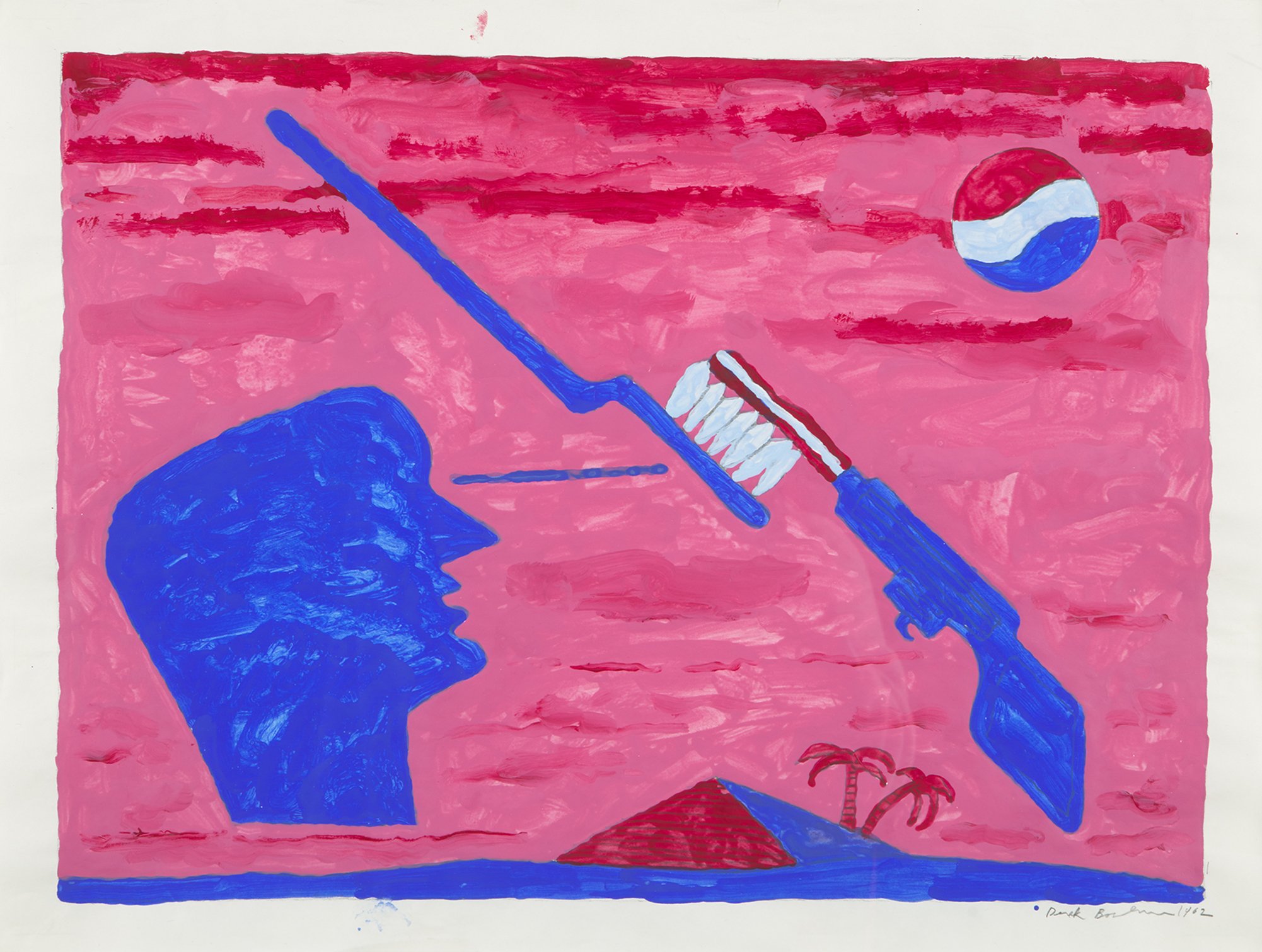Pop went the Easel | Derek Boshier at Whitford Fine Art
Derek Boshier b.1937, Clean Shot, 1962. Signed and dated lower right. Gouache on paper, 45.5 x 60 cm. Provenance: The Artist. Copyright Derek Boshier, courtesy of Whitford Fine Art. Photo by Paul Murphy“I’m very interested in the whole set-up of the American influence in this country,” states the 24-year-old Derek Boshier, rather earnestly, in Ken Russell’s seminal BBC documentary Pop Goes the Easel, made and broadcast in 1962. “In the infiltration of the American way of life. It’s through advertising… that this infiltration has come through”.
Boshier comes across as being rather more politically concerned than the other members of the group of pioneer pop-art friends featured in the film, which you can currently see on BBC iPlayer. Namely Peter Blake, Peter Phillips and Pauline Boty, all either students or alumni of the Royal College of Art (sadly David Hockney, another member of the gang, was not chosen to be interviewed by Russell, though he does appear at the end of the film, doing an idiosyncratic version of the Twist).
The young artist produced a set of gouache-on-paper paintings in the same year, exploring this theme, including Clean Shot (above) which is in the collection of the London dealers Whitford Fine Art (and on sale in their online gallery ). Clean Shot includes several motifs common to the artist’s work in this period: the Pepsi symbol (in this case as the sun, or maybe the moon), a toothbrush and toothpaste (in the trademark red-and-white livery of Colgate), and a pyramid and palm-tree combination. In this case the toothbrush emanates from the stock of a gun, suggesting that Boshier is making a wider point equating America’s cultural and geopolitical imperialism. A silhouetted head dominates the left side of the plane. All this in the pink-and-blue palette common to the whole series.
While there was great interest at the time in Boshier’s larger paintings, there was little contemporary interest in his works on paper and he stored them in a cupboard in his Ladbroke Grove flat, with the idea of ‘keeping something back’, on the advice of Hockney. They were not exhibited until March 2006, at an exhibition at Whitford Fine Art’s previous premises in St James’, London.
While not reaching the heights of Hockney or Blake, Boshier has enjoyed a successful career since he was thrust into the public spotlight in 1962. He has explored many media and styles, including op art, photography, screen-print, collage, film and assemblage. He will forever be associated with David Bowie, for whom he designed the covers of Lodger and Let’s Dance, and who became a good friend. He also produced artwork for the songbook of the Clash’s second album Give ‘Em Enough Rope, after teaching John Mellor (aka Joe Strummer) at the Central School of Art and Design in the 70s.
Boshier moved to the United States in the 80s, first to Texas and then to LA (where he teaches drawing at the Los Angeles School of Arts). His work is still motivated by political issues, notably gun control, police brutality and – plus ca change – the dominance of multinational companies.

